This post may contain affiliate links. Please see our disclosure policy.
Tepache, or naturally fermented pineapple soda, is an easy to make traditional drink from Central America. With just a few ingredients, you can make your own tepache at home!
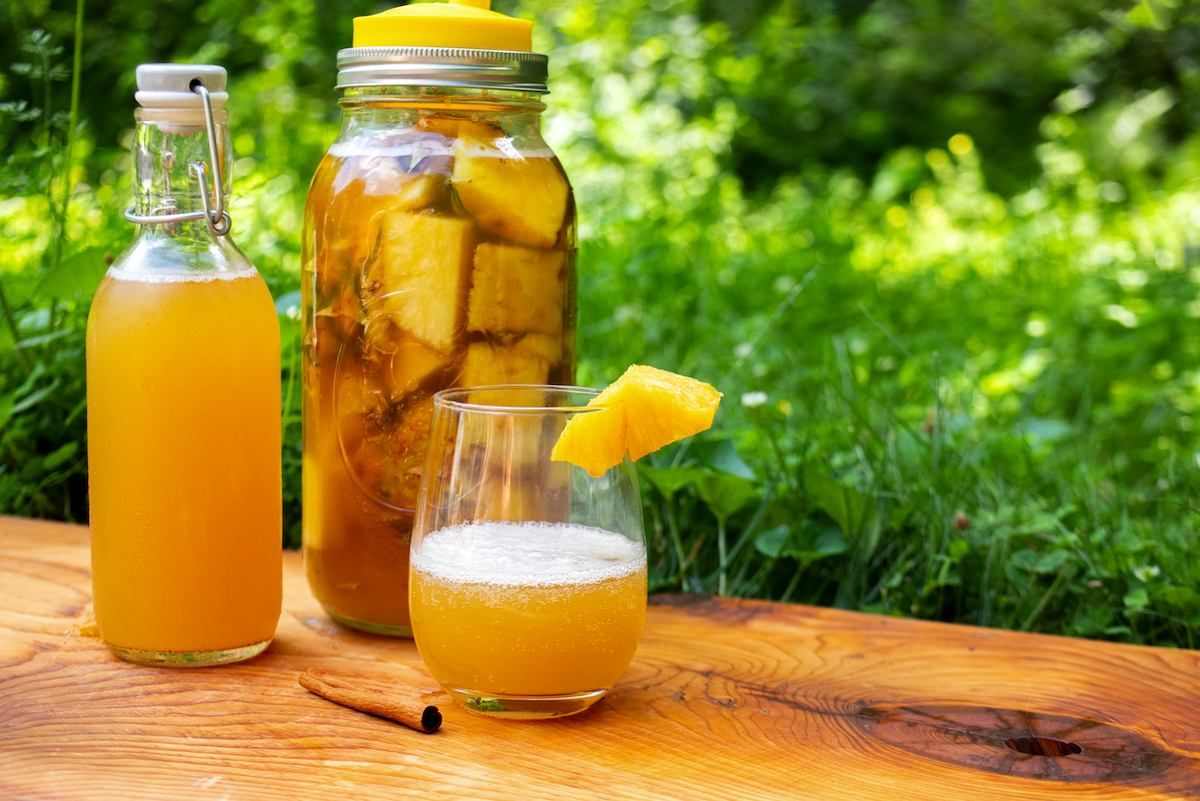
I absolutely love fermentation, be it a simple homemade sauerkraut or something as complex as homemade mead (honey wine). I’ve read many books about all types of fermentation, and these days, most people think of fermentation as a simple traditional way to preserve foods without refrigeration.
While fermentation was used for food preservation, it was also used traditionally in cultures throughout the world to satisfy out taste for fizzy foods (before artificial carbonation).
Tepache is a good example of this, and it’s a quick and easy homemade pineapple soda that’s naturally carbonated by fermentation.
While many of these traditional recipes are lost to the sands of time, there is one person working to revive old traditions and keep them alive and bubbling, literally…
Sandor Ellix Katz is the author of many books on fermentation, and this recipe comes from his most recent book Fermentation Journeys. In it, he documents his travels all over the world learning traditional fermentation techniques and recipes.

The following recipe is from Sandor Katz’s Fermentation Journeys by Sandor Ellix Katz (Chelsea Green Publishing, October 2021) and is reprinted with permission from the publisher.
I like to start with the simplest of ferments—sweet simple sugars that yeast and bacteria can effortlessly access and metabolize into alcohol and acids. With sugary fruits, plant saps, and diluted honey or sugar, fermentation is a spontaneous phenomenon: utterly unstoppable.
Anyone who has ever harvested an abundance of any kind of fruit has discovered that some of it, inevitably, is already fermenting. Squeeze the juice out and it will all start to ferment, quickly. Plant saps readily ferment as well, once you extract them from the plant. Honey does not ferment so long as it remains free of water, but the addition of even small amounts of water enables the yeasts that are always present in raw honey to ferment its sugars and turn it into mead.
Even if you are working with honey that has been heated or refined sugar that has surely been cooked, yeasts are everywhere around us and will find their way to any available sugars. The sources of the sugars that people ferment into alcohol and more lightly fermented beverages vary around the world.
Before I was specifically interested in fermentation, I enjoyed palm wine in West Africa. Many years later, when I was better informed about how it is made, I encountered palm wine again, in a couple of different forms, in Southeast Asia.
In Mexico, I learned about the importance of the dryland succulent plant maguey (or agave) and the elaborate cultural traditions around its processing into pulque and mezcal. I’ve witnessed different methods of fermenting pineapples—into tepache and guarapo de piña—in Mexico and Colombia.
In Italy, I harvested grapes to make wine, and I have encountered passionate winemakers around the world. I have learned about persimmon vinegar (and pickles made from the residue!), mauby, and fruit enzyme drinks. And, of course, I’m still making mead.
Wherever there is an abundant carbohydrate source, people likely have a method for fermenting it.
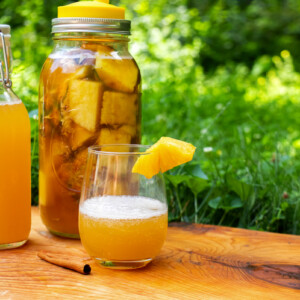
Tepache
Ingredients
for about 1 quart/1 liter
- 1/2 cup sugar, or more, to taste*
- 1 Medium Pineapple,
Just the Peel and Core, eat the rest of the fruit!, cut into 1- to 2-inch/3- to 5-centimeter pieces
- 1 Medium cinnamon stick,
optional, and/or a few whole cloves and/or other spices
Instructions
- Dissolve the sugar in about 1 cup/250 milliliters of water.
- Place the pineapple skin and core pieces and the optional spices into the vessel.
- Pour the sugar water over the pineapple, then add additional water as needed to cover the pineapple.Cover with a loose lid or cloth, and stir daily.
- Ferment for 2 to 5 days, depending upon temperature and desired level of fermentation. It will get fizzy, and then develop a pronounced sourness after a few days.
- Taste each day after the first two to evaluate the developing flavor. Once you are happy with the flavor, strain out the solids.
- Enjoy fresh or refrigerate for up to a couple of weeks.
- If it gets too sour, do not despair! After straining out the solids, leave it with its surface exposed to airflow and it will become pineapple vinegar after a week or two.
Notes
Nutrition
Nutrition information is automatically calculated, so should only be used as an approximation.
About the Author
Sandor Ellix Katz, is a fermentation revivalist. A self-taught experimentalist who lives in rural Tennessee, his explorations in fermentation developed out of his overlapping interests in cooking, nutrition, and gardening. He is the author of four previous books: Wild Fermentation, The Revolution Will Not Be Microwaved, The Art of Fermentation (a New York Times bestseller and winner of a James Beard Foundation Award in 2013), and Fermentation as Metaphor. The hundreds of fermentation workshops he has taught around the world have helped catalyze a broad revival of the fermentation arts. Find out more at wildfermentation.com or on IG @sandorkraut.
Fermented Drinks
Looking for more fermented drink recipes?
- How to Make Kvass
- How to Make Water Kefir
- Finnish Fermented Lemonade (Sima)
- Elderflower Cordial
- Homemade Tepache with Pineapple Scraps


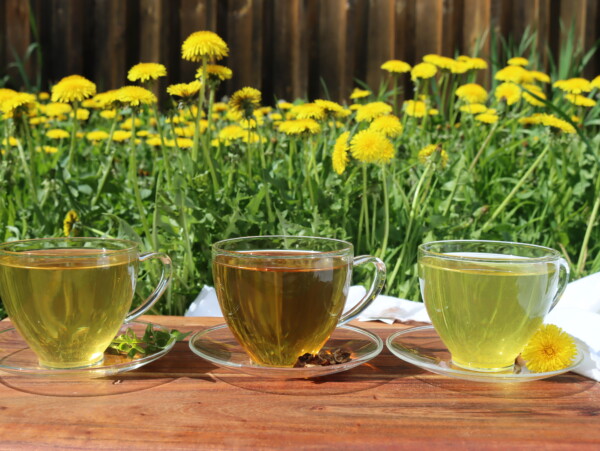
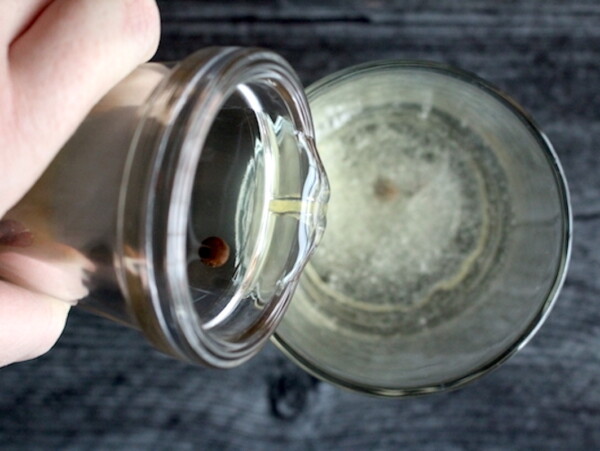
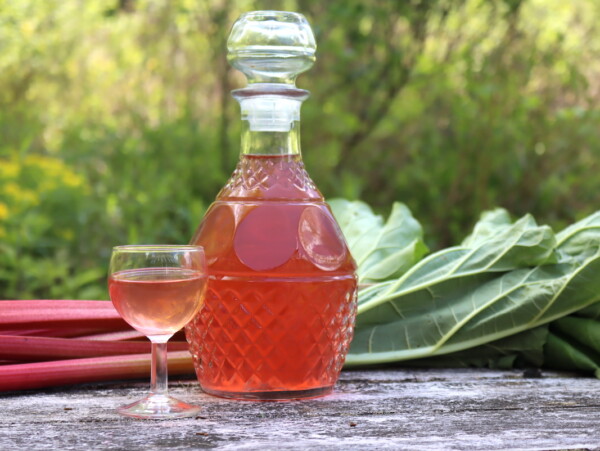
So there’s bubbles and a light film after 24 hours. Smells ok, nothing funny looking growing on it.
Is that light film on the liquid normal?
Sometimes you get a bit of Kham yeast at the top in ferments, and that’s normal. It gives you a slight film and it’s harmless. Just make sure you keep all the solids below the water line, and you can scoop off the film if you like.
Can you use honey instead? And can you use the pineapple flesh to make this drink and eat it after the drink is done?
You can use honey, and yes, you can use the pineapple in the drink and then eat it after. Enjoy!
Would it work with pineapple juice.
Yes, you could use pineapple juice, it’d work just fine. You would need to add a pinch of yeast to get the fermentation started though, as the pineapple peels have natural yeast on them.
This looks so good! What a fun drink to make for friends!